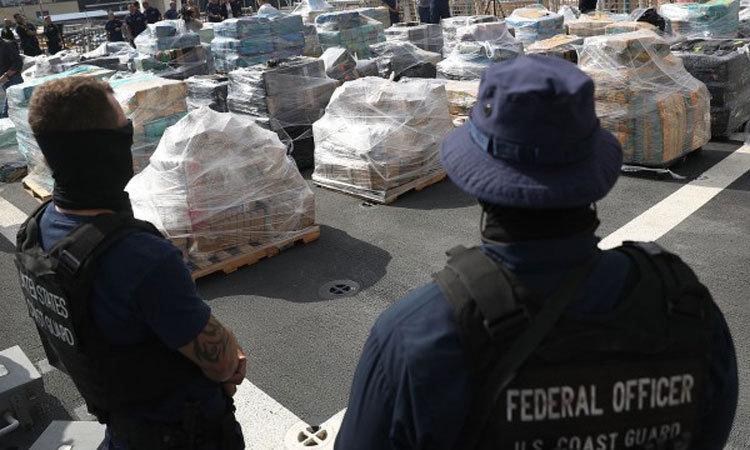There was an estimated 710 metric tons of cocaine circulating in 2016, as there was a boom in production. Therefore it comes as no surprise that a record amount is being seized on the high seas on its way to the American market, last year alone, the US coast guard confiscated record 221 metric tons of the substance.
However, the coast guard believes that for every one drug-trafficking boat it tracks down, four make it through. So with six million square miles of ocean to patrol in the Eastern Pacific, the Caribbean, and the Gulf of Mexico, and just five big ships to work with, the agency is turning to technology to help expand its reach.
On a two-week stay aboard the coast guard cutter Stratton as it cruised off the coast of South America in the Pacific Ocean, a reporter with the Associated Press observed the first deployment of a ScanEagle drone for drug interdiction.
It didn’t take long for the drone to have an impact. On the second day of operations, it spotted a suspicious craft. A small boat launched from the Stratton intercepted it, and it yielded without a fight, turning over 700kgs of cocaine in the process. On the street, that could sell for over $100m.
Turning coast guard ships into drone-toting aircraft carriers could do plenty to enhance their effect at sea. Such a force multiplier is needed – in a report in March, the US Department of State estimated that 97% of the cocaine that enters the country is first smuggled out of South America on “noncommercial maritime conveyances,” which include everything from fishing boats to homemade submarines.
Colombia, meanwhile, is facing the largest coca crop in history. In 2015, the Colombian government shut down aerial spraying of herbicides meant to eradicate coca amid concerns that exposure to glyphosate (aka Roundup) was leading to increased cancer rates.
Farmers also raced to plant coca so that they could qualify for a government program that richly rewards growers who agree to rip up their plants. As a result, the area under cultivation grew massively, to an estimated 465,000 acres in 2016.
It seems unlikely that technological solutions could stop so much cocaine from making it to market entirely.
We will have to wait and see o this one; the coast guard’s drug-fighting drone program is only just getting off the ground.



Comments are closed, but trackbacks and pingbacks are open.